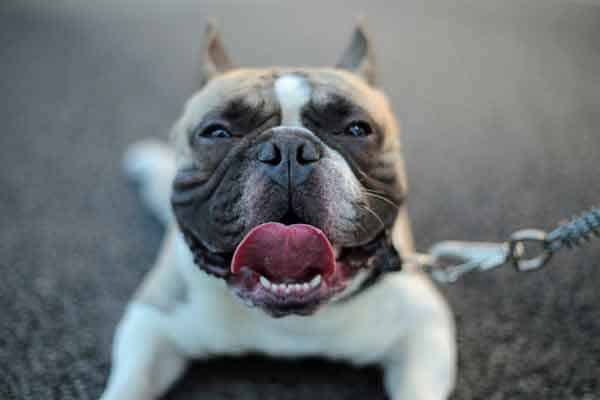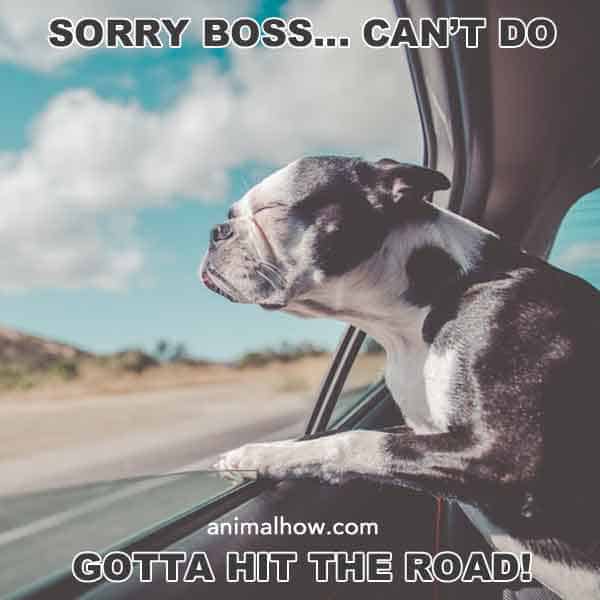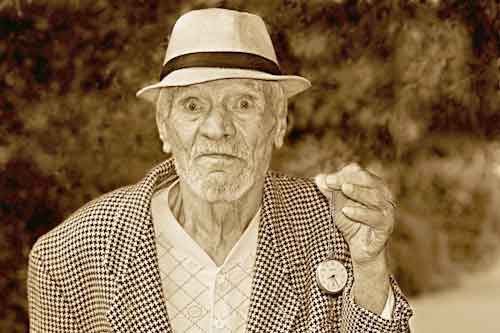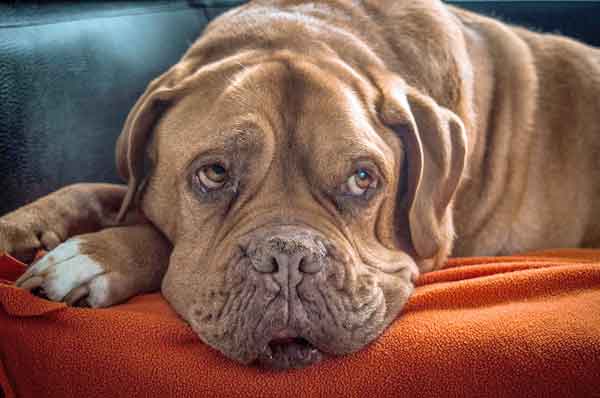One of the first things to consider when adopting a dog is the amount of shedding you should expect. Several factors come into play here like short-haired vs. long-haired breeds.
Do Short-Haired Dogs Shed Less Hair?
Short-Haired dogs do not have a winter coat to they tend to shed more frequently and constantly than long-haired dogs. They often shed hair in larger numbers but because the hair is shorter you will notice the shedding from long-haired breeds more.
But things here are actually not as simple as they appear.
Let’s take a closer look at what’s going on when we’re talking about the amount of shedding with short-haired versus long-haired dogs.
Table of Contents
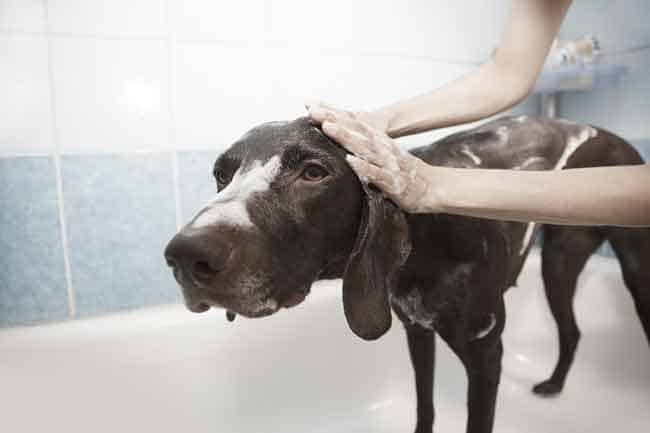
Shedding In Short-Haired Vs. Long-Haired Breeds
The first thing to mention here is all dog breeds shed hair once in a while.
Unless you get a hairless dog of course.
This is because the old hair will eventually die and need to be replaced by new hair. So when people talk about non-shedding Dog breeds they are really talking about dog breeds that shed very little.
So how do the short-haired and long-haired dog breed stack up when it comes to the amount of shedding you should expect?
The first thing we need to look at is the differences between single-coated and double-coated dogs.
Some dogs have a single layer of hair while other dog breeds have two layers of hair. We call them “single-layered” and “double-layered” breeds. The double-layered dog breeds our dogs that come from cold regions like Siberia, Russia, Canada, etc.
They have developed the extra layer of coat under the external coat to be able to keep warm during the cold winter season.
Most double-coated dogs are long-haired breeds or at least dogs with pretty long hair.
When we are talking about double-coated dogs we are talking about dog breeds that fluff up their undercoat during the winter months to keep warm. And when the season turns to spring it’s time to shed off that thick undercoat.
This is when the extensive shedding begins and this is what we often refer to as “the main shedding season”.
Short-Haired Dogs Shed More (But In Smaller Chunks)
When we compare short-haired dogs to long-haired dogs we find that shorthaired dogs typically shed more.
Many people wrongfully believe that short-haired dog breeds will not shed as much as long-haired dogs. This is simply wrong. Ask any owner of short-haired jacks or puggles. They will let you know that they need to use a lint-roller every time they pet the dog.
But things can get a little tricky here so stay with me for a moment as I explain the details.
The short-haired dog breeds typically shed hairs in larger numbers. This is one would look at the actual number of hairs they lose on a daily basis. That because the hairs are shorter they do not mess up your home as much as the hairs from long-haired breeds.
The long-haired breeds, on the other hand, will shed less hair when would look at the actual numbers but because the hair is long they will get noticed more on the furniture, the floor, etc.
So as you can see, it’s not that simple and we need to clarify exactly what we are talking about here. We need to be specific and clarify whether we are talking about the number of hairs or the amount of hair.
Our short-haired friends are typically easier to groom and they would require less cleaning and the house.
Why Do Short-haired Dogs Shed All-Year-Round?
Short-haired dogs shed constantly because they only have one layer of coat. They don’t have extra fur to get rid of after the winter season. Instead, they will shed the old hair more constantly throughout the year.
As we looked at above, the short-haired dog breeds are typically new single-layered breeds.
This also means that these short-haired dog breeds will not shed extensively during the spring and fall like their double-coated cousins.
Instead, they will shed more constantly all through the year because they only have a single layer of coat.
This can be frustrating because you will have to talk hair flying all over the place all through the year. But the good news here is that you don’t have the extensive shedding periods in the spring in the fall.
So you shouldn’t expect the shedding season to apply to your short-haired dog but you should expect the amount of shedding to be pretty constant through the year.
How To Get Rid Of The Short Dog Hair (Indoors)
It can be very difficult to get all the short hairs out of your furniture and the rest of the house.
It’s harder because the hairs are shorter and they can be harder to detect. They tend to get in everywhere. Everywhere. This is also why people refer to their short-haired friends as “shedding machines”.
So we need special equipment in order to get the short hairs out and here we can really recommend a special type of vacuum cleaners.
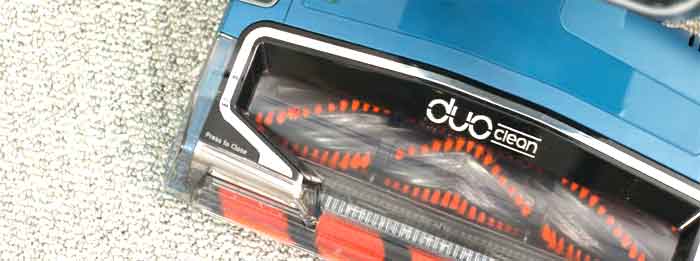
Normal vacuum cleaners will quickly get tangled up in the brush tool from all the little dog hairs. This will make it impossible to clean anything – especially dog hair.
Luckily, this problem has been solved.
You need to check out these vacuum cleaners that are specially designed to pick up the tiny dog hair without getting them stuck in the brush roll after 5 minutes.
They work amazingly well.
They also come in a smart handheld model which you can take into the car without having to deal with wires.
We have also created a guide for you to find the best brushes and de-shedding tools in order to get rid of the dog hair from short-haired breeds. See our recommendations here for brushes for shorthaired dogs.
Less Grooming Is Required For Short-Haired Dogs
When we’re talking about dog grooming we are also looking at how to get rid of tangles and knots in the hair.
Here you are in luck if you have a short-haired dog.
Because the actual hairs are shorter, they tend to not get tangled up as much as we see with long-haired and wire-haired breeds.
This means that you can skip the first part of the grooming process when you want to brush your dog.
Normally we would always start the grooming process with a “Curry brush” in order to get rid of all the tangles in the hair. This is very important when we are working with dogs with double-layered coats because otherwise, we might hurt the dog when we shift to the de-shedding tool.
With the short-haired breeds, we can get rid of the excess hair more quickly by starting out with a rubber glove:

You can find a link to these types of gloves here. You can also go here to find more brushes and de-shedding tools we recommend.
These rubber gloves are really great because they will give the dog a sense of being rubbed instead of being brushed. It can create a great bonding session for you and your hairy friend.
These gloves are also great when you are giving the dog a shower.
They will protect your hands and they will also let you groom the dog without using tools that can slip out of your hands when you have everything soaked in soap.
It’s not always easy to groom the dog in the shower but with these rubber gloves, you have much more control of the process.



